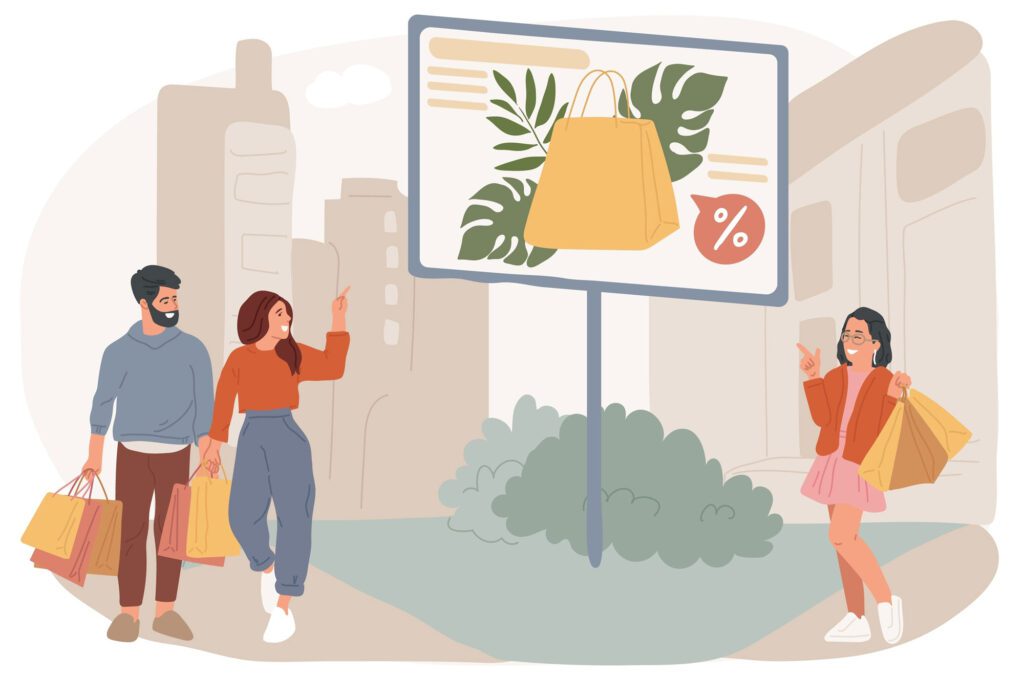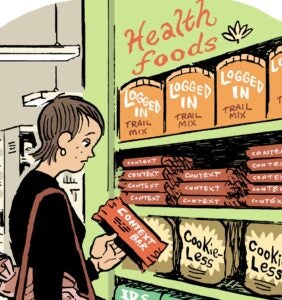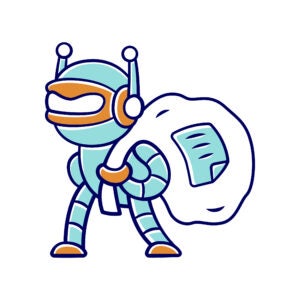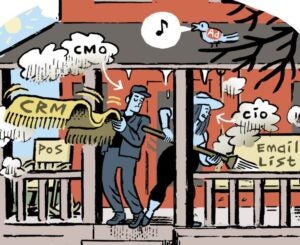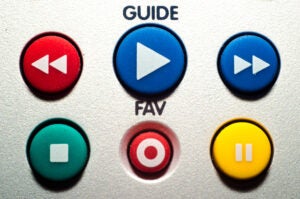The programmatic digital out-of-home (DOOH) market has been growing at a steady clip, and ad buyers are now looking at media quality metrics beyond audience reach and impressions.
But assessing the quality of physical screens across a variety of real-world locations requires new mechanisms.
To encourage more brands to enter the channel, programmatic DOOH platforms are adopting the tools marketers have become accustomed to using in other digital channels, such as placement guarantees and viewability measurement.
Despite an uptick in programmatic DOOH spending, brands “want more assurance around the quality of not just the screens, but the environments,” said Marc Bartholomew, SVP of OOH at Dentsu.
Realities of programmatic DOOH
When advertisers buy digital out-of-home direct, they’re able to review the inventory themselves, Bartholomew said.
“But programmatic removes that layer,” he said. “So, knowing that you’ve got verification on the quality of the screen and the location – beyond just how many people are seeing it – is really important for us and our clients.”
According to Bartholomew, Dentsu wants to drive more clients to programmatic DOOH because it allows them to buy OOH inventory with more speed and flexibility. However, programmatic only accounts for a single-digit percentage of Dentsu’s overall OOH spend.
The agency is working with programmatic DOOH platform Vistar Media to make it easier for brands to measure these campaigns.
But encouraging programmatic DOOH spend is somewhat of a chicken-and-egg situation.
Over the past year, roughly 2,700 new advertisers have run campaigns through Vistar’s network, including more than 1,500 through its DSP.
That influx of new business is partially what motivated the company’s launch of a media quality measurement solution called Vistar Verify in early June, including a certification process to make sure a supplier’s DOOH inventory meets a set of established quality standards.
Providing actionable data on the quality of DOOH screens should encourage even more new brands to get into programmatic DOOH, said Eric Lamb, the company’s SVP of supply.
Adding new advertisers, rather than shifting existing OOH advertisers to programmatic, is the market’s best chance for continued growth, he added.
Media certification
To get certified, publishers must answer more than 40 questions about their DOOH inventory, including questions about the type of venue and the precise location where screens are installed, whether any of the screen’s display area is dedicated to non-ad content and what tech partners the media owner works with.
Their inventory must satisfy Vistar’s standards for the environment in which a display is located, the quality of the display hardware, how ads appear on-screen and the reliability of the measurement and targeting signals.
In addition, Vistar uses the Google Places API and pictures of the displays themselves to evaluate whether a publisher is correctly categorizing its screen locations and the on-screen ad experience.
Lamb emphasized that verification is important not because publishers are intentionally misrepresenting their inventory but because it’s often harder for publishers to maintain accurate data about their media in real-world environments than it is online.
“Sometimes they make mistakes, and sometimes they don’t have the data available across 50,000 screens to know exactly where everything is,” Lamb said.
Once Vistar confirms that a publisher is offering an accurate assessment of its DOOH network, that publisher receives a certification badge that shows up in Vistar’s DSP.
Currently, Vistar’s list of certified media owners includes Captivate, Clear Channel Outdoor, Grocery TV, GSTV, Intersection, Lamar, Lightbox, T-Mobile Advertising Solutions’ Octopus, OUTFRONT, Starlite, TVM, Volta and Zoom Media.
Vistar’s solution also places pressure on non-certified media owners to improve their inventory, Bartholomew said.
DOOH growing pains
While Vistar was initially worried about angering media owners that don’t meet its criteria for certification, DOOH companies actually appreciate having guidance on what to improve about their networks, Lamb said.
“A lot of these [DOOH publishers] are not media companies, historically,” he said. “They’re just learning the media landscape, and it’s helping them get a sense of what they need to do to position themselves better.”
Currently, Verify is only for the US market. By the end of Q3, Vistar plans to finish auditing its entire US publisher network. By Q4, the certification process will extend to Canada, Europe and APAC.
Vistar plans to roll out features to let advertisers target only certified inventory and to confirm ad delivery. It’s also working on adding reporting tools that compare certified and non-certified inventory and performance across individual publishers.


